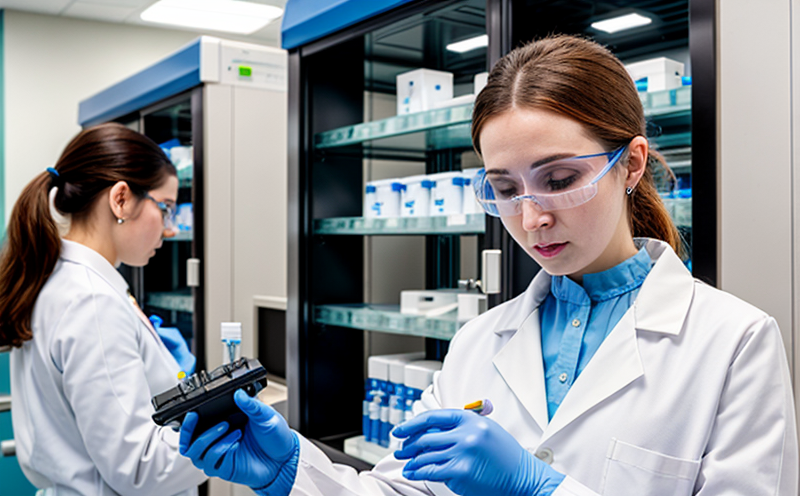Urine Bioanalysis Testing
The process of urine bioanalysis testing is a critical component in pharmaceutical development and quality assurance. It involves the comprehensive examination of biological components within urine samples to ensure drug safety, efficacy, and compliance with regulatory standards. This service plays a pivotal role in both preclinical and clinical stages of drug development.
Urine bioanalysis can detect various biomarkers that are indicative of drug metabolism, pharmacokinetics, and potential toxicological effects. The analysis may include the identification of parent drugs, metabolites, and other endogenous compounds present in urine. This information is essential for understanding how a drug behaves within the human body and to identify any adverse reactions or interactions.
The scope of urine bioanalysis testing extends beyond mere detection; it also involves quantification and qualitative analysis using advanced analytical techniques such as Liquid Chromatography-Mass Spectrometry (LC-MS) and High Performance Liquid Chromatography (HPLC). These methods provide precise and reliable data, which are crucial for regulatory submissions.
For pharmaceutical quality managers and compliance officers, urine bioanalysis testing offers a robust means to ensure that products meet stringent standards. It helps in identifying any deviations from the expected profile of a drug, thereby ensuring product safety and efficacy. In R&D settings, this service aids in optimizing drug formulations by providing insights into how different components interact within the body.
Urine bioanalysis testing also supports procurement activities by ensuring that raw materials used in manufacturing are free from adulterants or impurities. This not only enhances product quality but also protects consumers from potentially harmful substances.
In summary, urine bioanalysis testing is an indispensable tool in the pharmaceutical industry, providing critical data that guide decision-making processes throughout drug development and commercialization.
Why It Matters
The importance of urine bioanalysis cannot be overstated in the context of pharmaceutical quality assurance. By accurately measuring drug concentrations and identifying metabolites, this testing ensures compliance with international standards such as ISO 17025 for laboratory accreditation.
- Ensures Drug Safety: Regular monitoring helps detect any adverse effects early on.
- Enhances Efficacy Understanding: Provides insights into how drugs behave in the human body.
The results of urine bioanalysis are instrumental in making informed decisions regarding drug development and regulatory compliance. It serves as a bridge between preclinical studies and clinical trials, ensuring that only safe and effective drugs reach the market.
Applied Standards
Urine bioanalysis testing adheres to several international standards which ensure consistency and reliability across laboratories worldwide. These include:
- ISO 17025: Ensures that the laboratory meets stringent quality management requirements.
- ASTM E2846: Provides guidelines for quantitative analysis of bioanalytical samples.
The use of these standards guarantees that all testing processes are conducted under controlled conditions, leading to accurate and repeatable results. This is particularly important given the variability inherent in biological samples like urine.
Why Choose This Test
- Precision: Advanced analytical techniques ensure precise measurement of drug concentrations.
- Compliance: Results conform to international regulatory standards, facilitating smoother compliance processes.
- Efficiency: Streamlines the development and approval process by providing timely insights into drug performance.
Urine bioanalysis testing is chosen for its ability to provide detailed information about drug behavior in vivo. This data is invaluable for optimizing drug formulations, identifying potential side effects, and ensuring product safety.
The reliability of this service makes it a preferred choice among pharmaceutical companies looking to enhance their product development processes. It offers peace of mind knowing that every step in the production chain adheres to strict quality control measures.





